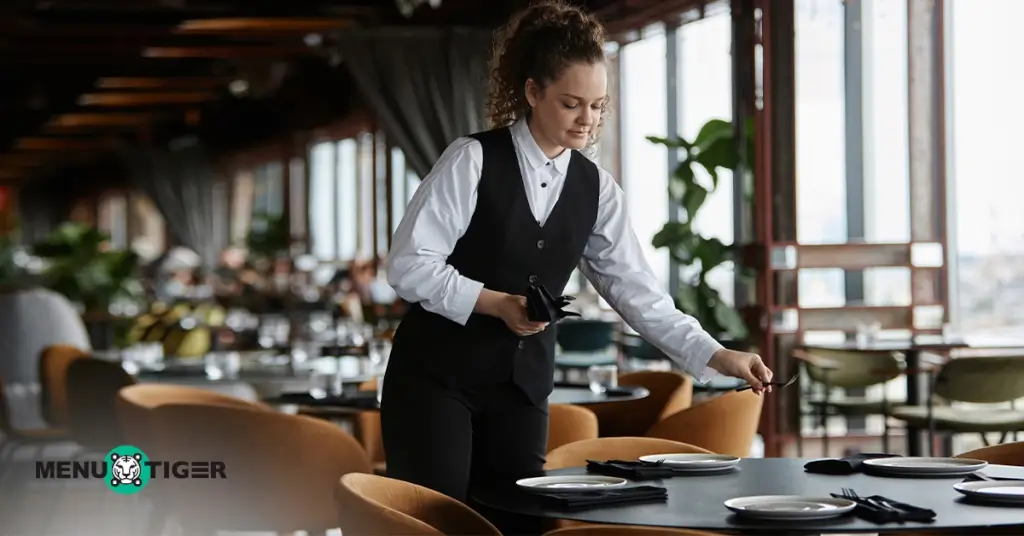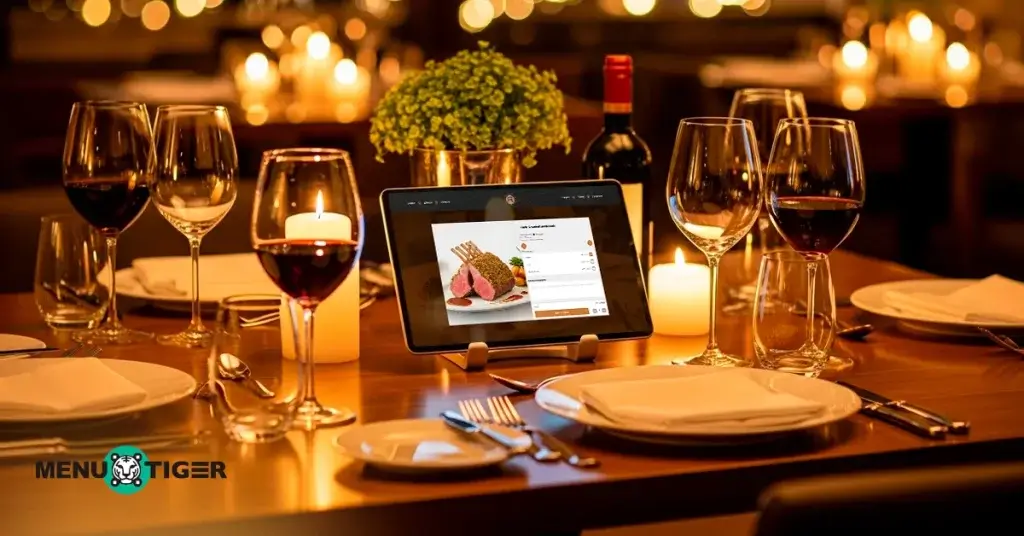
What It Takes to Earn Michelin Stars and Join the World’s Best Restaurants
Last Updated: November 17, 2025
Most restaurateurs have long dreamed of earning a Michelin star, as it represents something far deeper than a mere award.
Achieving such a distinction is no small feat, given that the Michelin Guide has long been considered the gold standard of dining, built on exceptionally high expectations and the daily challenge of operating at that level.
Despite how uncompromising this may sound, 26 restaurants in the United States achieved three-star status in 2023 to 2024, according to The World Population Review.
So, what are these restaurants doing differently apart from millions of others worldwide?
This guide explores the principles that Michelin-starred restaurants live by and shows how these practices can inspire your own journey toward excellence.
How many three-star Michelin restaurants are there in 2025?
According to data from Oysterlink, based on information from The Michelin Guide, only 157 restaurants in the world hold the prestigious title of a three star Michelin restaurant in 2025. That’s a tiny fraction of the millions of restaurants operating globally.

The United States alone has over one million restaurants, based on recent restaurant industry statistics, yet only 16 have reached three-star status. Most are in California, New York, Illinois, and Washington, D.C., which are regions known for culinary investment, tourism, and access to skills and talents.
Earning one star is an achievement. Earning three, places the restaurant in one of the most selective groups in the dining industry.
A broader look at Michelin-starred restaurants
The exclusivity of three stars often overshadows how wide and diverse the Michelin ecosystem is:
- Over 500 restaurants hold two stars.
- More than 3,000 restaurants have received one star.
These numbers show a global dining landscape filled with excellence. Yet the real question for most restaurateurs is simple: how do you break into the world of the Michelin star restaurants?
What standards are used to determine the awarding of Michelin Stars?
According to the Michelin Guide, their inspectors dine at restaurants anonymously every year. They use the same set of standards all over the world to keep things fair and consistent.
When they judge a restaurant, they focus on what’s on the plate, using these five criteria:
- Quality of ingredients
- Mastery of cooking techniques
- Balance and harmony of flavors
- Creativity and personality in dishes
- Consistency across menu
Michelin also gives other recognitions, such as the Bib Gourmand, which highlights restaurants that serve high-quality food at a reasonable price, and the Green Star, which recognizes sustainable practices.
They don't have a registration process to get your restaurant rated. Inspectors base their visits on reputation, buzz, and word of mouth. So, pay attention to what your restaurant offers beyond the food, including the atmosphere, the service, and even the tableware.

What you can learn from the world’s #1 restaurant

Will Guidara, co-owner of Eleven Madison Park, helped lead the restaurant to three Michelin stars and to the top spot on The World’s 50 Best Restaurants list in 2017. His philosophy is straightforward:
To create an extraordinary restaurant, you have to be willing to be unreasonable.
Not reckless, but unreasonable in the sense of going further than what’s expected or easy. Much of what improved Eleven Madison Park came from small decisions that seemed unconventional on the surface but created unforgettable experiences.
From insights shared by Will Guidara in the Uncensored CMO podcast, below are the principles from his approach that any restaurant can adapt:
1. Be bold in ways others won’t
Guidara narrates how he overheard customers talking about having experienced the best restaurants, including Eleven Madison Park, but mentioning that there was one thing they had never tried, which is the NYC hot dog. So, he ran outside, bought a hot dog, asked the chef to present it beautifully on a plate, and served it to the customers.
If you think about it, it was quite “unreasonable” to offer a hot dog from a food cart in a top-tier fine dining restaurant.
The customer, as he described it, “freaked out” and had the best experience.
That’s the power of being unreasonable. At the end of the day, as Maya Angelou said, “People will forget what you say, people will forget what you do, but people will never forget how you made them feel.”
2. Treat reviews as your lifeline
Customer reviews are the foundation of your restaurant’s standards. They help you understand the impact you’re making in the industry, making them a valuable tool for evaluating your performance. With these insights, you can improve and consistently deliver the best experiential dining possible.
3. Win where others fall short
Guidara mentioned visiting an exceptionally good restaurant as part of their strategy to understand what the best were doing. While the food was unbelievably excellent, the coffee tasted only “just fine.”
Given that the world consumes 2 billion cups of coffee a day, ignoring its quality is a common industry blind spot.
This inspired Guidara to do reverse benchmarking, the idea of focusing on what the competitors don’t do best, and excel in it to gain a competitive advantage.
4. Master the 95:5 rule
It is understandable for business owners not to invest in things that cannot be measured, because for everyone, what cannot be measured cannot be managed.
But there are a lot of unmeasurable aspects that will truly contribute to your business, such as good experience, interaction, memories, and connectivity.
The 95:5 rule is all about financial balance.
Spend 95% of the time carefully managing daily operations, so you have the freedom to “foolishly” use the remaining 5% on over-the-top gestures that delight customers, build customer loyalty, and hit them right in the heart.
5. Solve what hurts in a way no one expects

You need to ask yourself, “What’s the main issue in our restaurant?” and address it in a way that creates a unique experience for customers.
For instance, Guidara identifies a common pain point in their field, which is the payment process.
It’s often tricky to know when to hand over the bill. When customers have to ask for it, they usually start feeling impatient.
One strategy from Guidara is to observe customers to see if they are about to leave, and then offer a bottle of wine while handing over the bill.
In this way, guests will feel that they are not rushed despite having the bill, since they are offered a bottle of wine to enjoy more.
That is a small gesture, but it offers profound generosity and has a significant impact.
6. Hire people, not résumés
As a restaurant owner, you naturally want the best for your establishment. So, it is completely normal to seek professionals with a high level of experience.
But often, businesses reject good candidates because they lack a specific experience or credential.
The unreasonable way to hire someone is not to ask, “Does this person have every skill on the list?”, but to ask, “Will they get along with the rest of the team?”
It’s more important that a person fits the team culture than just being highly skilled, especially if you adopt the kitchen brigade system, because a skilled person can clash with how the team works if they are used to doing things the way they have always been done.
Hence, the interview should be about connecting with them, understanding their personality and potential, work ethic, and how they interact with others.
7. Think corporate and act restaurant smart
Being corporate smart means that every move and decision is guided by data, structure, profitability, and key performance indicators, as well as measurable results.
On the other hand, being restaurant smart focuses on hospitality, understanding people, and making decisions that feel right in the moment.
Most businesses excel at either being restaurant smart or corporate smart, but rarely both.
The key is to be the best in both worlds, pairing the efficiency and scalability of corporate smart with the human connection and agility of restaurant smart.
8. Success lives where opposing ideas meet
The tension between two opposing ideas is not something to avoid but something to embrace.
Most of the time, when conflicting ideas arise, owners tend to compromise and choose one. However, you do not have to pick just one, because creative balance allows you to find harmony between contrasts.
For example, Guidara encountered a situation in NYC where he offered a hot dog in a fine dining restaurant, an idea that seems to contradict the concept of fine dining.
But the problem was not serving a hot dog itself; it was the belief that providing an extraordinary experience, even in an unexpected way, was somehow absurd.
The idea is that success comes because of tension, not despite it.
9. Tough moments produce the best ideas
Limitation forces creativity, and that is the key insight.
Guidara learned this from experiencing a financial crisis back in the day. He believes that crises force you to think differently, and handling them well can lead to lasting benefits.
One of his guiding principles comes from a quote his father gave him on a paperweight when he was a child:
“What would you attempt to do if you knew you could not fail?”
So, instead of losing composure, take advantage of moments of crisis and use them as your training ground, because succeeding in difficult moments makes success in better times much easier.
10. Persistence is a competitive advantage
As Mark Zuckerberg once said, “The greatest success comes from having the freedom to fail.”
Having the skills and talent is not enough to be a winner, because what brought a successful person to where they are right now is the freedom to fail and stick with it long enough to learn and get really good at what they do.
The power of persistence means holding on and experiencing the effect of patience and practice.
Why Michelin-starred restaurants embrace digital menus

Rejecting restaurant technology means overlooking how the Michelin Guide is redefining what dining can be.
Quince, a Michelin three-star restaurant in San Francisco, for example, serves its signature dish, “A Dog in Search of Gold,” on an iPad.
In Malaysia, Michelin-starred restaurants utilize technology for reservations, tracking guest preferences, and managing operations, thereby creating a better overall experience.
Technology is now an essential part of dining, and here’s how tech-driven menus help deliver a Michelin-worthy experience:
1. Creates an inclusive dining experience
Over 61 million Americans live with disabilities, and in 2025, ADA compliance with digital accessibility lawsuits will most likely increase by 320% from 2020.
Accessible digital menus, designed with the “we made this with you in mind” approach, allow people with blindness, low vision, limited mobility, dyslexia, or hearing impairments to order freely, naturally, and confidently, making them feel they are not different in any restaurant.
True hospitality is not simply accepting that this is what we offer in our restaurant, and this is what customers will get. It is about doing things that might seem unreasonable to many but create a real and lasting impact.
Technology becomes truly beautiful when directed at beautiful things.
2. Helps achieve waste-free dining
The Michelin Green Star highlights restaurants that care about sustainability. Many restaurants are adopting smart menus, which make a big difference by ensuring accurate orders and reducing mistakes from hand-written tickets or verbal miscommunications that often lead to wasted food.
Moreover, smart menus can also forecast demand more precisely, so chefs prepare just the right amount of food, keeping leftovers to a minimum.
3. Lets you focus on being restaurant smart

Restaurant order management systems are designed to be “corporate smart” so you can focus on being “restaurant smart,” with the system supporting you along the way.
It is corporate smart because it handles all the measurable data for you, including accounting, profits, total orders, and even identifying your best-selling items.
It is built with restaurant owners and their challenges in mind.
This way, instead of doing all the numbers manually, you can focus on being a full-service restaurant that provides the best hospitality, which is what truly matters.
4. Supports human-centered hospitality
The truth is, no technology can ever replicate the genuine creativity and emotional intelligence that a skilled server brings to hospitality.
The purpose of the restaurant ordering system is to support and make things easy for humans, not replace them.
They take care of the busy work like orders, inventory, payments, and guest information so your team can focus on creating unforgettable moments and giving service that feels personal.
5. Promotes personalized experience
Smart menus can collect valuable information like reviews, preferences, contact details, and even do the marketing for you.
This helps restaurants get to know their customers better and offer a more personal experience, such as surprising them on their birthday, remembering their food restrictions, and understanding their needs through reviews.
It actually helps many restaurants create an environment that feels like home and a haven for customers.
6. Strengthens growth and scalability
Deciding to grow as a restaurant chain feels like reliving the very first experience of building your main branch because you want to offer that same excellence in your second one.
Innovation now makes that possible. With the ordering system, you can manage multiple stores under one platform, keeping your data, menu, kitchen, and brand perfectly trackable and synchronized wherever you are, at any time.

The rundown: Excellence is built before the stars arrive
The fundamental lesson for achieving the highest levels of success in the restaurant industry, such as earning three Michelin stars, is to reject conventional thinking and embrace unreasonable excellence.
The whole philosophy is to go above and beyond the practical to create genuinely shocking experiences of delight and hospitality that people will never forget, even if it feels a little “foolish” at the moment.
Even something as seemingly simple as a restaurant ordering system can play a part in this.
By viewing every tool as an opportunity to surprise customers in unexpected ways, a business can cultivate a legendary status that is felt by the heart, not just judged by the mind.
Eulla
Eulla joined MENU TIGER’s Content Team with a foundation in English teaching. She combines language expertise and creativity to produce engaging content that educates audiences and drives meaningful results.


